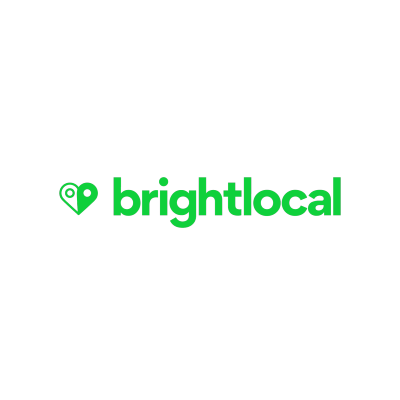12 Techniques for Utilizing SEO Tools to Boost Organic Traffic
Search Engine Optimization is a dynamic field that undergoes constant modifications. With the new era of digitalization, where the battle for online presence is fierce, knowing how to use SEO tools in a more advanced way is essential for businesses looking to improve their organic traffic. SEO plays an integral role in attracting more visitors to a website by dominating results from search engines. To remain at the forefront, one does not only need to know the basics but must also become a master of the more advanced processes.

In this article, we will look at practical techniques for using SEO tools to improve organic traffic to your website. It provides digital marketers, content creators, and entrepreneurs with actionable insights.
1. Understanding the Foundation
Before understanding advanced SEO techniques, it is necessary to have a good handle on the basics of SEO. The main purpose of using SEO tools is to increase the visibility of your website in search engines such as Google, Bing, and Yahoo. They assist in finding opportunities for improvement, monitor the performance of your website, and reveal the rivals’ plans. This aim is to help improve the ranking of your site for specific keywords, raising organic traffic.
2. Comprehensive Keyword Research
Whereas the first stage of keyword research simply involves the identification of popular search terms, advanced keyword research attempts to probe further. Apply SEO tools to monitor keyword trends, search volumes, and the competitive environment. Search for long-tail keywords with low competition but high conversion opportunities.

Tools such as Ahrefs, SEMrush, and Moz have authority that allows you to identify niche-specific keywords and analyze user intent, which is very important for ensuring that your content meets your audience’s needs. You need to focus on long-tail keywords that are relevant to user intent. For example, if you are a credit card company, concentrate on words such as “how they can open a credit card account for the first time.”
3. Content Gap Analysis
Identifying content gaps requires determining what topics and keywords your competitors are ranking for, but you aren’t. Filling these content gaps will allow you to gain more traffic and expand your niche coverage. Use SEO tools to run a content gap analysis and prioritize content production according to unused opportunities.
4. Create User-Centric Content
Content still reigns supreme in the world of SEO. The idea of appealing high-quality user-oriented content is to attract and retain visitors:
Know Your Intent
Determination of audience intent is very important. What are they looking for? Do they need information, products, or services? This data will allow you to apply your content and keyword technique correctly.
Content depth
Develop complete guides, case studies, and in-depth articles. Content that has value and gives answers to the user’s questions is rewarded by Google.
User Experience
Optimize your website for an effortless interface. Load speed, platform compatibility, and navigational simplicity increase rankings.
5. Leverage Social Media and Influencer Marketing
Social signal is used in SEO. Use social media platforms to advertise content. Partner with influencers in your industry to increase your audience’s size. Their support would increase traffic and add credibility.
6. Link Building

Deploy tools such as Ahrefs or Moz to conduct a thorough analysis of your competitors’ backlink portfolio. Find and make contact with authoritative websites that offer guest posting opportunities or link exchanges.
Register as an authority in your area and answer suitable questions. The exposure brought by your insights in reputable publications will give you a high number of valuable backlinks.

7. Expert insights for journalists
HARO (Help a Reporter Out) connects journalists with sources. Become an expert in your field and answer related questions. In case you have your insights published on reputable media sources, you’ll receive attention and beneficial backlinks.
8. Monitor Your Competitors

A detailed competitor analysis can be done through advanced SEO tools. A thorough understanding of competitors’ strengths and weaknesses allows you to determine gaps in their strategies and zones where you can gain an advantage. Analyze their backlinks, keyword rankings, and content strategy. Consider their keywords, content, and backlinks. Apply their lessons and find the areas that need your attention. Tools like SpyFu and SimilarWeb allow you to analyze competitors’ traffic sources, and top-performing content, as well as their keyword strategy to refine your tactics.
9. Ensure Professional SEO
On-Page SEO

On-page SEO optimization involves more than just integrating keywords into your content. More complicated methods include URL structure optimization, meta tags, header tags, and image optimizations for better customer experience and search engine visibility. Analyze your on-page elements using SEO tools to ensure that they’re optimized for the users and search engines. For example, Screaming Frog can crawl your website to discover issues such as broken links, duplicate content, and missing alt tags.
Off-Page SEO
Build relationships with other websites. All these include guest posts, influencer collaborations, and social sharing. Sophisticated link-building tactics aim at gaining high-quality backlinks from authoritative websites.

SEO tools, by analyzing the backlink profiles of your site as well as your competitors, can help to reveal potential link-building opportunities. Services such as Majestic and Ahrefs provide tools to measure backlinks quality, monitor new and lost links, and find authoritative domains in your niche to reach out to their owners.
Technical SEO
Technical SEO involves Monitoring website speed, fixing broken links, and applying schema markup. Tools such as Google Search Console can highlight problems.
Improving Site Speed and Mobile Usability

The main ranking factors include page speed and mobile usability. Therefore, sophisticated SEO tools including Google’s Page Speed Insights and Mobile-Friendly Test provide useful recommendations on improving the site’s performance on various platforms. By following these instructions, you can increase user experience, reduce bounce rates, and elevate the ranking position of your site on search engines.
Utilizing Schema Markup
Schema markup is a variety of microdata that helps search engines read and display your content in search results. Implementing the schema markup can increase your site’s visibility in the SERPs through rich snippets, which improve the CTRs. Tools like the Google Structured Data Testing Tool enable validation and monitoring of your schema implementation.
10. Leveraging Local SEO

For businesses with a physical location, local SEO takes center stage. Advanced SEO techniques include optimizing your Google My Business listing, local citations, and geo-specific keywords. Solutions like BrightLocal and Moz Local are valuable tools for the management of local SEO, which enables you to boost your local search results.
11. Monitor Your Results
Utilize tools such as Google Analytics and Google Search Console to monitor your progress. Track organic traffic, keyword rankings, and user behavior. Modify your strategies in accordance with data insights.
12. Tracking and Analyzing Performance

At last, using SEO tools for continuous monitoring and analysis of your site’s performance is essential for lasting success. The tools such as Google Analytics and Search Console provide information regarding your traffic sources, user behavior, and conversion metrics. Periodically analyzing this information helps you to make rational decisions to enable you to fine-tune your approaches to achieve the best possible results.
Conclusion
Advanced SEO techniques that are attained by mastering are a compilation of understanding of user intent, creation of valuable content, utilization of social media, acquiring quality links, and optimization of your website. Be in the know, change to suit the changes, and your organic traffic will flourish. Increasing organic traffic necessitates a complex strategy that utilizes all the resources available in the best SEO tools. Using in-depth keyword research, optimizing on-page elements, creating a powerful backlink profile, and regularly monitoring performance, businesses can improve significantly their online presence and number of visitors.
After all, SEO is a marathon and not a sprint. Three factors that are essential in ranking high in search engine results include patience, persistence, and continuous improvements. Sustained efforts and ongoing learning will give long-term results.
About the Author

Tom Desmond is a veteran digital marketing specialist with extensive experience in SEO and content strategy. Tom is passionate about utilizing the newest SEO tools and methods to produce higher long-term outcomes.






